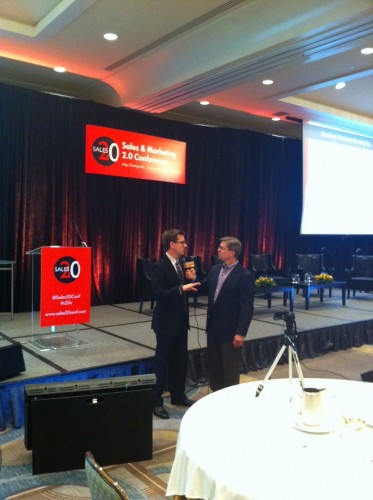
Justin Shriber, Regional Vice President, CRM On Demand, at Oracle just delivered the best presentation at Sales 2.0 Conference so far. Justin kicked off his presentation with a joke about a ship captain who wore a red shirt so his crew wouldn’t see him bleed when they were fighting pirates, who also had brown pants for when the odds were stacked against them. 🙂
Justin led the presentation with some interesting stats.
- The Average VP of sales tenure is less than 24 months.
- 89% of reps say they aren’t getting enough coaching
- Sales says 25% of the leads aren’t qualified, while marketing says 89% of the leads are qualified
- 81% of companies missed earnings in 2008
Sobering, they aren’t entirely surprising.
In addition to the following stats, Justin shared 3 reasons why the sales organization is broken.
- There is too much score keeping and not enough coaching – Teams need coaching. If your team is too focused on the numbers, you are missing out on a tremendous opportunity. Organizations need to support the team by coaching them up. This starts by coaching the coaches. To know if your culture is keeping score or coaching take a look at who does the talking. If the sales leaders do all the taking, then you are probably a score keeper. If your sales leaders ask questions, then listen. You probably have a culture of coaching.
- Too many big games, not enough practice – According to Justin we put too much emphasis on the game and don’t practice enough. When this is done the deal is at risk if mistakes are made. By committing to practicing, mistakes can be ferreted out and avoided during the sale. Justin suggests a playbook that outlines the plays and sets reps in the right direction. Certifications are also recommended. Having reps “certified” creates a proactive way to practice and minimizes mistakes. One of the more entertaining examples of the Justin’s presentation was when he described a sales environment where the sales managers collected all the objections the team encountered and created a huge list. Reps would then have to do a mock presentation in front of the managers and the team and be prepared to answer the objections. It created anxiety, but more importantly created a way for solutions to the objections to be addressed in a team environment.
- Too much defense, not enough offense– Can your non sales functions answer the question; “What is the sales teams revenue goal?” Can your non-sales functions answer the question; “How does your role or job affect sales?” If the answer is no to either one of these questions, your team is playing defense. According to Justin, too many companies play defense not capitalizing on non sales functions to drive sales. The key is to look to play offense, look for ways to anticipate what customers need even before they do. By soliciting the entire organization to play offense, more opportunities are created. Think Amazon’s recommendations engine.
Coach, practice, and go on offense, it will offset much of the negative stuff coming from outside your organization.

